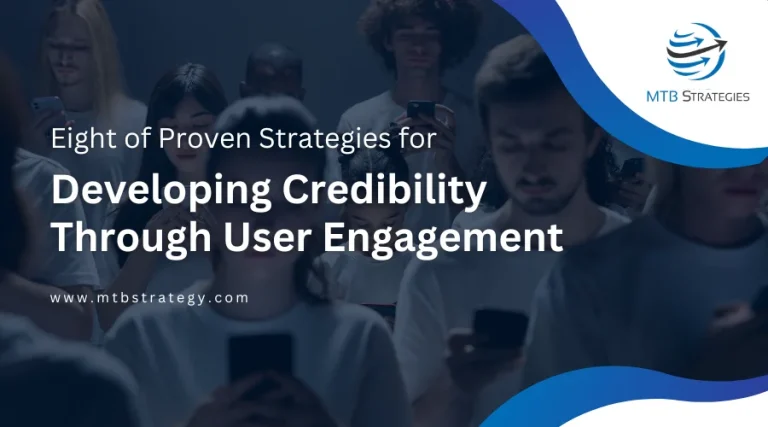One of your marketing strategy’s most crucial elements is content strategy because it determines who, what, where, when, and how you will communicate with your audience. It encompasses far more than a simple list of topics and material forms. Buyer personas, path maps, editing schedules, audits, and content governance are all part of it.
A properly executed strategy creates a content culture within your company. It offers a framework to measure the return on investment from content marketing, uphold accountability, and guarantee consistent, predictable business outcomes. As a result, you can make bigger expenditures that engage more customers and produce more profitable results for your company.
But producing quality content costs time and money. In order to achieve your goals, it’s imperative to have a well-organized plan, regardless of whether you outsource blog posts or create films internally.
Difference Between Content Marketing & Content Strategy
How do content marketing and content strategy differ from one another?
A higher-level corporate activity than content marketing is content strategy. The road map is what directs content marketing. The “planning” activity of content strategy entails all the choices and actions required to connect with customers through content.
Contrarily, content marketing is the “doing” activity that entails planning, organizing, producing, publishing, and publicizing content. Content marketing refers to the strategies that come after a content strategy.
How to Develop a Content Strategy
Most marketers imagine concrete results, like articles and social media posts, when they think of content strategy. Yet the production framework is equally crucial for scalable content generation.
Not only that, but we also need to think about our goals and the people we want to influence. Procedure is important, therefore let’s discuss the precise actions and procedures you need to follow while developing a content strategy template for your brand.
1. Decide on Your Content’s Objectives
Setting up specific business objectives and KPIs is crucial before launching any new content marketing initiatives. Without goals, you can’t create a strategy, evaluate a program, or explain ROI to stakeholders in your firm.
2. Create Buyer Personas & Audience Segments
The next step is to do audience research and develop personas. This stage is crucial since wasting time and money on a content strategy that targets the incorrect demographic.
3. Perform a Gap Analysis & a Content Audit
Discover how to carry out a content audit to locate and catalog all current brand material and assess its efficacy. Your client journey may be incomplete, your content may be irrelevant, or your pages may be performing poorly. An audit can help you identify these issues.
4. Include Content in Customer Journey Map
Create a customer journey map for each buyer persona after you’ve defined your audience segments and buyer personas. To reach consumers who are just starting their buyer’s journey, a blog article may target a general head-term in your business. The article might provide important clarifications and possible solutions. Your opinion on the subject of the an or. The,, or, of course,, if you if not the, the.
When the prospect has finished their initial research and is starting to interact with other companies or vendors, another blog post may be written with them in mind. The prospect might now desire additional in-depth and tailored material that focuses on particular goods, services, solutions, features, and advantages.
Prospects want to evaluate possibilities and make a decision at the bottom of the funnel. An ROI calculator, thorough case studies, a free trial, or a voucher are all effective ways to convert their curiosity into a conversion.
5. Carry Out a Keyword Search
You need traffic whether your main objective is to grow e-commerce sales or generate more leads. But, having quality content by itself won’t bring in thousands of people to your website. Also, you must optimize for keywords.
The core of an SEO-focused content strategy is keyword research since it keeps you organized and directs you to the most important subjects. You won’t have to write the same blog post five times if you conduct thorough keyword research because it will allow you to cover issues thoroughly. More interaction, traffic, and conversions result from this.
How do you start? Find out what subjects interest your audience the most by using tools like Ahrefs and Semrush. Also, you may utilize SEO tools to identify the top pages of your rivals’ websites as well as the head terms and long-tail keywords that are bringing them the most visitors.
Validate the inquiries made online by your audience. Use resources like Google Question Hub, Answer the Public, and Answer Socrates. You now have the chance to strategically answer a crucial question first. The “People Also Ask” (PAA) boxes for your target keywords in the Google SERPs can also be verified.
6. Come Up With Content Ideas
When coming up with new content ideas, refer to your list of keywords. Using an iterative ideation process is essential for creating quality content. Searching for the one thing that hasn’t been written is a waste of time. Instead, come up with fresh ideas for a stale subject or combine two disparate concepts to create something original.
7. Use a Content Management System
You’ll need a capable Content Management System if you intend to produce a lot of content (CMS). You may create, arrange, publish, and save several types of material with your CMS, including blog entries, audio, video, PDFs, and more.
8. Create a Process for Content Development
You need a well defined, repeatable, systematic process for developing your content strategy because it won’t produce itself. The appropriate process makes sure you always produce valuable material of the highest caliber.
Make it clear who will be in charge of each task and by when. Standardize your workflow and technology stack for content. Project management software, grammar checker software, SEO tools, and much more are options outside of your CMS.
9. Put a Content Calendar in Place
A content calendar is much more than just a timetable. Also, it is an organizational framework that ties your content team’s objectives and bigger marketing strategies together.
Your internal staff should have online access to your content calendar. To make it simple to notice what you published, what is still being worked on, and what is on hold, keep it simple and skimmable. The entire process of producing content is kept on schedule by a content calendar. It makes sure that deadlines are met and that “fire drills” at the last minute can be avoided. Your team will remain organized and on track to meet your objectives with the help of your content schedule.
10. Put Quality Before Quantity
Don’t waste the chance to engage with your audience by providing them with sloppy content if they are paying attention to you. With great quality, you can stand out with your brand.
Yet, what is valuable, usable content? Depending on your sector, it may be original market research, professional counsel via a podcast, a list of resources, lovely images, or even emotionally engaging content and movies.
11. Post Lengthy Articles
Long-form content, like blogging, typically prevails when it comes to Google rankings and organic search traffic. First off, because it delves deeper into a subject, long-form material frequently ranks for more keywords than shorter content. You can organize the material to grab the highlighted snippet, respond to more queries, and naturally incorporate additional long-tail keywords.
Second, long-form material typically receives more shares and backlinks. Lastly, long-form content works well when combined with other content types to create a single content piece that is both engaging and link-worthy.
Long-form content makes it simpler to construct content marketing funnels. Whether it’s an article or landing page, you’ll have more room to place CTAs on the page that direct visitors to the following stage of the buying process.
12. Develop Knowledge, Credibility, & Trust
Conversions, consumer loyalty, SEO, and other factors are affected by brand trust. Because of this, it’s crucial to develop trust by integrating your brand’s inherent expertise into your content strategy.
13. Get People to Feel Something
The most effective material, as any good content strategist knows, has an impact on readers unconsciously. Users are attracted to, inspired to take action by, and motivated to share material that appeals to their emotions. In addition, doing so is a surefire way to attract the kind of natural backlinks that boost organic search engine rankings.
14. Provide a Wide Range of Content
With your content strategy, make an attempt to mix up the sorts of content marketing. Keep in mind your buyer personas while you brainstorm because each group consumes media in a different way.
Even if your target audience groups have a similar demographic makeup, you should nevertheless vary your approach. For instance, some people learn best visually, while others learn best audibly, and yet others prefer reading text.
15. Establish Your Content Syndication & Promotion Plan
After you submit a blog entry or a video, your content strategy is not over. Consider this. You’ve spent a lot of time and money creating engaging content that you hope will create results. Don’t just share it once before moving on to the next project, instead. Instead, incorporate amplification into the steps of your content strategy. Share articles on various social media networks many times. Don’t be hesitant to run paid advertisements. Before you start on a spending binge, make sure you comprehend the ROI.






